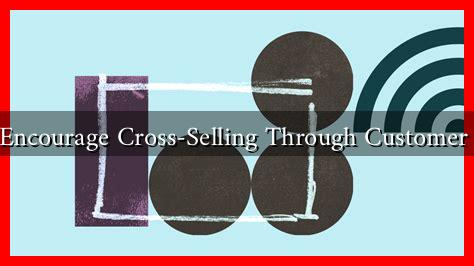-
Table of Contents
How to Encourage Cross-Selling Through Customer Loyalty
In today’s competitive marketplace, businesses are constantly seeking innovative strategies to enhance customer loyalty while simultaneously increasing sales. One effective approach is cross-selling, which involves promoting additional products or services to existing customers. By leveraging customer loyalty, companies can create a win-win situation where customers feel valued and businesses see increased revenue. This article explores how to encourage cross-selling through customer loyalty, providing actionable insights and examples.
Understanding Cross-Selling and Customer Loyalty
Before diving into strategies, it’s essential to understand the concepts of cross-selling and customer loyalty. Cross-selling is the practice of suggesting related products to customers based on their previous purchases or interests. Customer loyalty, on the other hand, refers to a customer’s commitment to repurchase from a brand due to positive experiences, trust, and satisfaction.
According to a study by Bain & Company, increasing customer retention rates by just 5% can lead to a profit increase of 25% to 95%. This statistic underscores the importance of fostering loyalty as a means to enhance cross-selling opportunities.
Strategies to Encourage Cross-Selling Through Customer Loyalty
Here are several effective strategies to encourage cross-selling through customer loyalty:
- Personalized Recommendations: Utilize data analytics to understand customer preferences and purchase history. By offering personalized product recommendations, businesses can enhance the shopping experience and increase the likelihood of cross-selling. For example, Amazon’s “Customers who bought this item also bought” feature effectively encourages customers to explore additional products.
- Loyalty Programs: Implement a loyalty program that rewards customers for their purchases. Offering points for every dollar spent can incentivize customers to buy more products. For instance, Sephora’s Beauty Insider program allows members to earn points that can be redeemed for exclusive products, encouraging them to explore more items in the store.
- Bundling Products: Create product bundles that offer a discount when purchased together. This strategy not only provides value to customers but also encourages them to try new products. For example, meal kit services like Blue Apron often bundle ingredients for multiple meals, enticing customers to purchase more than they initially intended.
- Engaging Content Marketing: Use content marketing to educate customers about complementary products. Blog posts, videos, and social media content can highlight how different products work together, fostering interest and encouraging cross-selling. For instance, a fitness brand might create content on the benefits of using a specific protein powder alongside their workout gear.
- Exceptional Customer Service: Providing outstanding customer service can significantly enhance loyalty. When customers feel valued and supported, they are more likely to explore additional products. For example, Zappos is renowned for its customer service, which has led to high levels of customer loyalty and increased cross-selling opportunities.
Case Studies and Examples
Several companies have successfully implemented cross-selling strategies through customer loyalty:
- Starbucks: The Starbucks Rewards program encourages customers to earn stars for every purchase, which can be redeemed for free drinks and food. This loyalty program not only retains customers but also promotes cross-selling by introducing new seasonal products and limited-time offers.
- Apple: Apple’s ecosystem encourages cross-selling through its range of products. When customers purchase an iPhone, they are often encouraged to buy accessories like AirPods or Apple Watch, creating a seamless experience that enhances customer loyalty.
Measuring Success
To determine the effectiveness of cross-selling strategies, businesses should track key performance indicators (KPIs) such as:
- Average order value (AOV)
- Customer retention rate
- Cross-sell ratio (the number of additional products sold per transaction)
- Customer lifetime value (CLV)
By analyzing these metrics, businesses can refine their strategies and ensure they are effectively encouraging cross-selling through customer loyalty.
Conclusion
Encouraging cross-selling through customer loyalty is a powerful strategy that can lead to increased revenue and enhanced customer satisfaction. By implementing personalized recommendations, loyalty programs, product bundling, engaging content marketing, and exceptional customer service, businesses can create a loyal customer base that is more likely to explore additional products. As demonstrated by successful companies like Starbucks and Apple, fostering loyalty not only benefits customers but also drives business growth. By measuring success through relevant KPIs, businesses can continuously improve their cross-selling efforts and build lasting relationships with their customers.
For more insights on customer loyalty and cross-selling strategies, consider exploring resources from Forbes.

